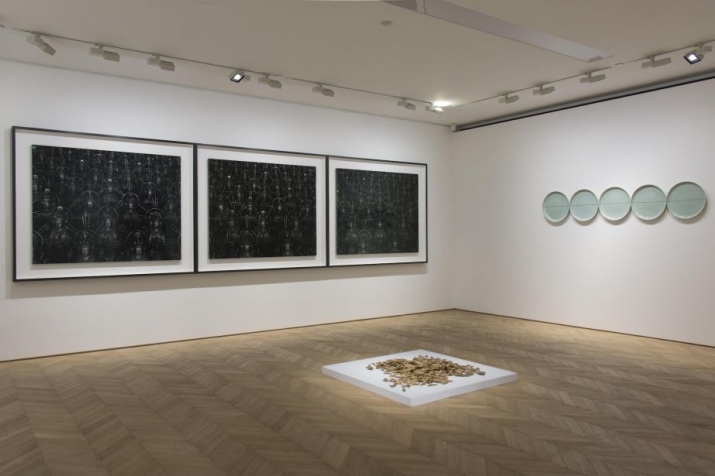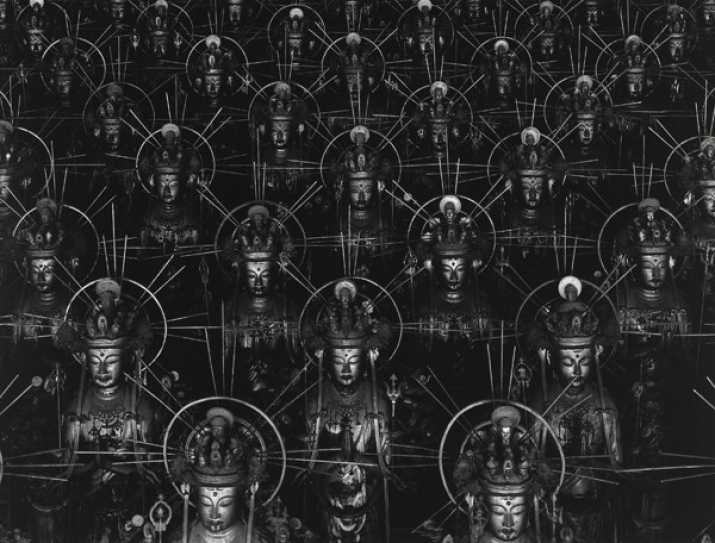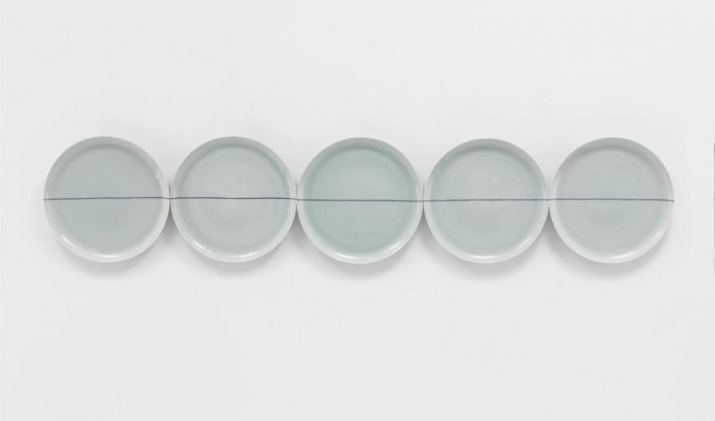NEWS
Pace Gallery Exhibition in Hong Kong Explores Zen Thought in Contemporary Art
 Pace Hong Kong's exhibition, Where Can the Dust Alight, features paintings and installations from five contemporary Asian artists. From blouinartinfo.com
Pace Hong Kong's exhibition, Where Can the Dust Alight, features paintings and installations from five contemporary Asian artists. From blouinartinfo.comPace Gallery’s Hong Kong exhibition space is presenting a group exhibition of five renowned artists from China and Japan that aspires to examine the influence of Zen Buddhist thought on contemporary artistic expression.
Running from 1 October–12 November in Hong Kong’s Central district, the exhibition, titled Where Can the Dust Alight, features paintings and installations from Hiroshi Sugimoto, Hong Hao, Liu Jianhua, Song Dong, and Zhang Huan, aiming to explore “how Asian contemporary art is coming to new understandings of Zen thought and art forms, which are not only expressed in creative forms, but, more importantly, in new definitions of the meditative experience and the transformation of the role of the self in art.” (Pace)
Zen, or Chan, is a school of Mahayana Buddhism that has its roots in Tang dynasty (618–907) China. Its transmission to China is traditionally credited to the Buddhist monk Bodhidharma, who is regarded as the first patriarch. From China, Chan then spread to Vietnam (where it is called Thiền), Korea (where it is known as Seon) and Japan (where it became Zen).
The exhibition’s title, Where Can the Dust Alight, is a reference to a stanza composed by Master Huineng (638–713), traditionally viewed as Chan Buddhism’s sixth and last patriarch.
There is no Bodhi tree,
Nor stand of a mirror bright.
Since all is void,
Where can the dust alight?
According to tradition, after Huineng composed the verse, the fifth patriarch, Master Hongren, realized that Huineng understood the true essence of the Buddha Mind and named him as his successor.
 Detail from Hiroshi Sugimoto's Sea of Buddha. Gelatin silver prints, 1995. From en.artintern.net
Detail from Hiroshi Sugimoto's Sea of Buddha. Gelatin silver prints, 1995. From en.artintern.netHiroshi Sugimoto’s Sea of Buddha, first conceived in 1988 and completed in 1995, is a series of works that depict the 1,000 statues of the bodhisattva Avalokiteshvara at the 12th century temple Sanjūsangen-dō in Kyoto, Japan. Hong Hao presents his new work Edged No.2, for which he collects dust in a natural state each day, expressinf his thoughts on vision through the emergence of forms in the dust. Liu Jianhua exhibits conceptual porcelain works, such as Fallen Leaves, while Song Dong has created a Mandala, using culinary sauces and spices, to represent a metaphor for the subtle connections between art and life. Chinese contemporary artist Zhang Huan’s work, meanwhile, draws parallels between Buddhist texts and those of the Christian Bible.
“Through the works of these five artists, the exhibition reveals the profound influence of Eastern religious philosophical ideas on the artist's conceptual explorations,” said Pace Hong Kong. “The rise of the avant-garde art movement in the 1950s and 60s led to a gradual decoupling of creative thinking from technique in favor of conceptual explorations. The Eastern religion of Buddhism, with its rich introspective philosophy and unique conceptual methods, provided the Western art world with many inspirations and challenges. In Asia, the cradle of Buddhist thought, the Zen thought deeply rooted in the culture would inevitably clash with the avant-garde artistic concepts from the West to create richly complex artworks.” (Pace)
 An untitled work by Liu Jianhua. Porcelain, 2012. From widewalls.ch
An untitled work by Liu Jianhua. Porcelain, 2012. From widewalls.chPace Gallery was originally founded in Boston, Massachusetts, by American art dealer, film producer and director Arne Glimcher. It now operates three galleries in New York City, along with locations in Beijing, Hong Kong, London, Menlo Park, Palo Alto, and Paris. It positions itself as a contemporary art gallery representing international artists and estates of the 20th and 21st centuries.
See more
What’s Zen Got to Do With It? Pace HK Explores Buddhism in Art (BlouinArtinfo)
INFLUENCE OF ZEN IN CONTEMPORARY ART EXHIBITION ANNOUNCED BY PACE HONG KONG (WideWalls)
Where Can The Dust Alight (Pace)
Related
Meditations in Light by Echo Lew (Buddhistdoor Global)
Alternate Realities in the Paintings of Wakana Kimura (Buddhistdoor Global)
A Buddhist Perspective on Conceptual Art (Buddhistdoor Global)
Art, Ecology, and Religion: Intersecting Landscapes on the 21st Century Silk Road
From Manga to Monks, Anime to Arhats: Recent Buddhist Themes in the Art of Takashi Murakami (Buddhistdoor Global)
Threads of Tranquility in the Paintings of Trang T. Lê (Buddhistdoor Global)
The Meditative Mosaics of Lee Kwanwoo (Buddhistdoor Global)














